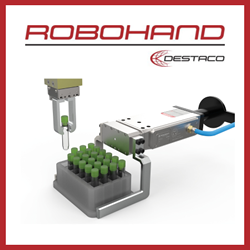These Five Exponential Trends Are Accelerating Robotics
City Government Offices In Japan Support SME`s For Enabling Advanced And New Manufacturing Capabilities.
Universal Robots Polishes Paradigm to 50% Production Increase
Artistic Style Transfer for Videos
A 'pick-by-robot' solution using a perception-controlled logistic robot called TORU
Scientists develop bee model that will impact the development of aerial robotics
Billions Are Being Invested in a Robot That Americans Don't Want
5 Real-Time, Ethernet-Based Fieldbuses Compared
The US service-sector jobs at risk from a robot revolution
Innovators offered chance to develop their ideas with world leading robotics manufacturer ABB Robotics
Zero Zero Hover Camera drone uses face tracking tech to follow you
Crowdfunding Projects For April
Bring 3D printed robots to life with 'Ziro' hand-controlled robotics kit
Process Data Readouts on a Smartphone: Safety Through Transparency
Face2Face: Real-time Face Capture and Reenactment of RGB Videos
Records 2656 to 2670 of 3729
First | Previous | Next | Last
Featured Product

DESTACO - Revolutionizing Industrial Automation
Robotics and Automation - Featured Company

